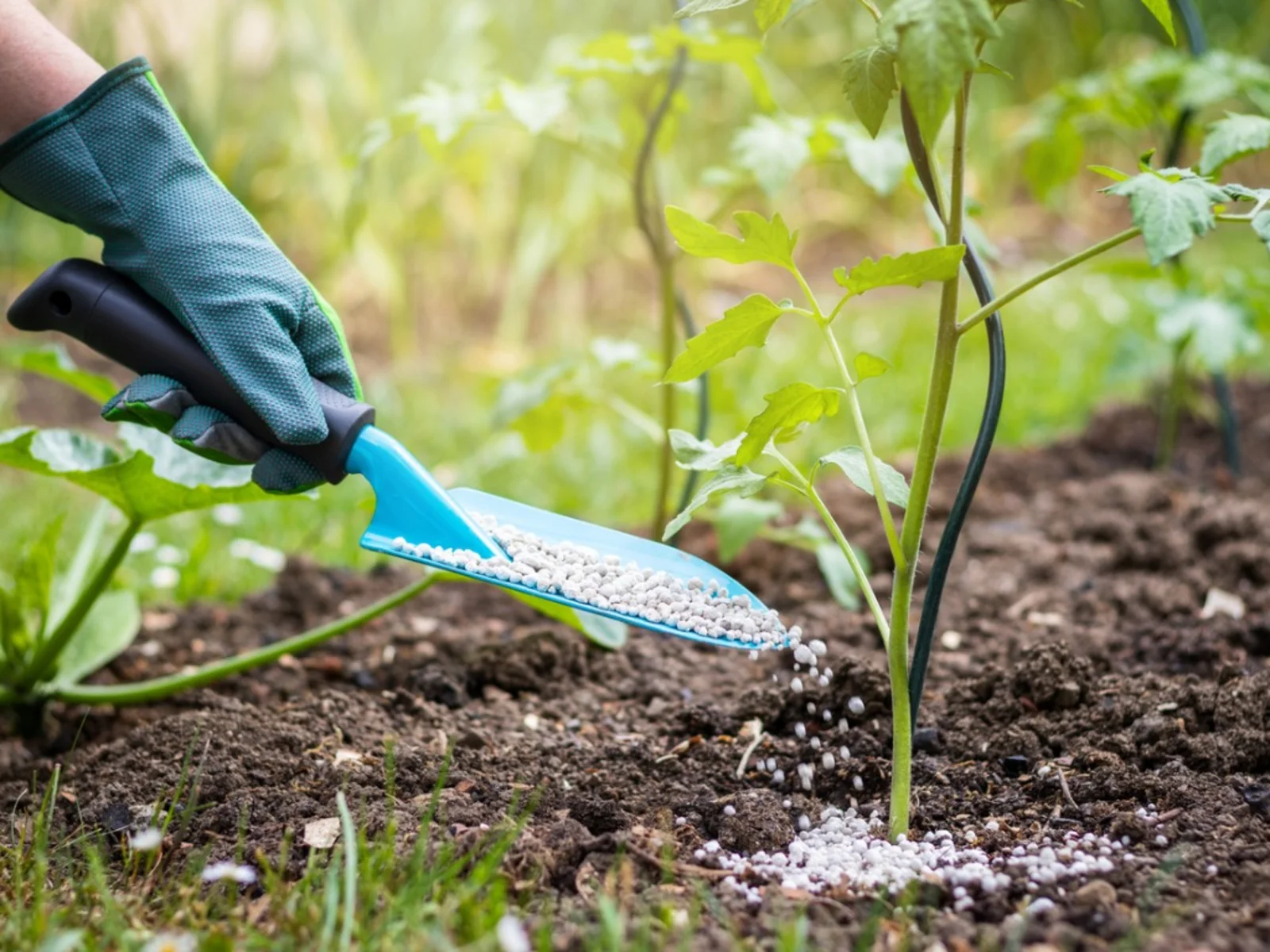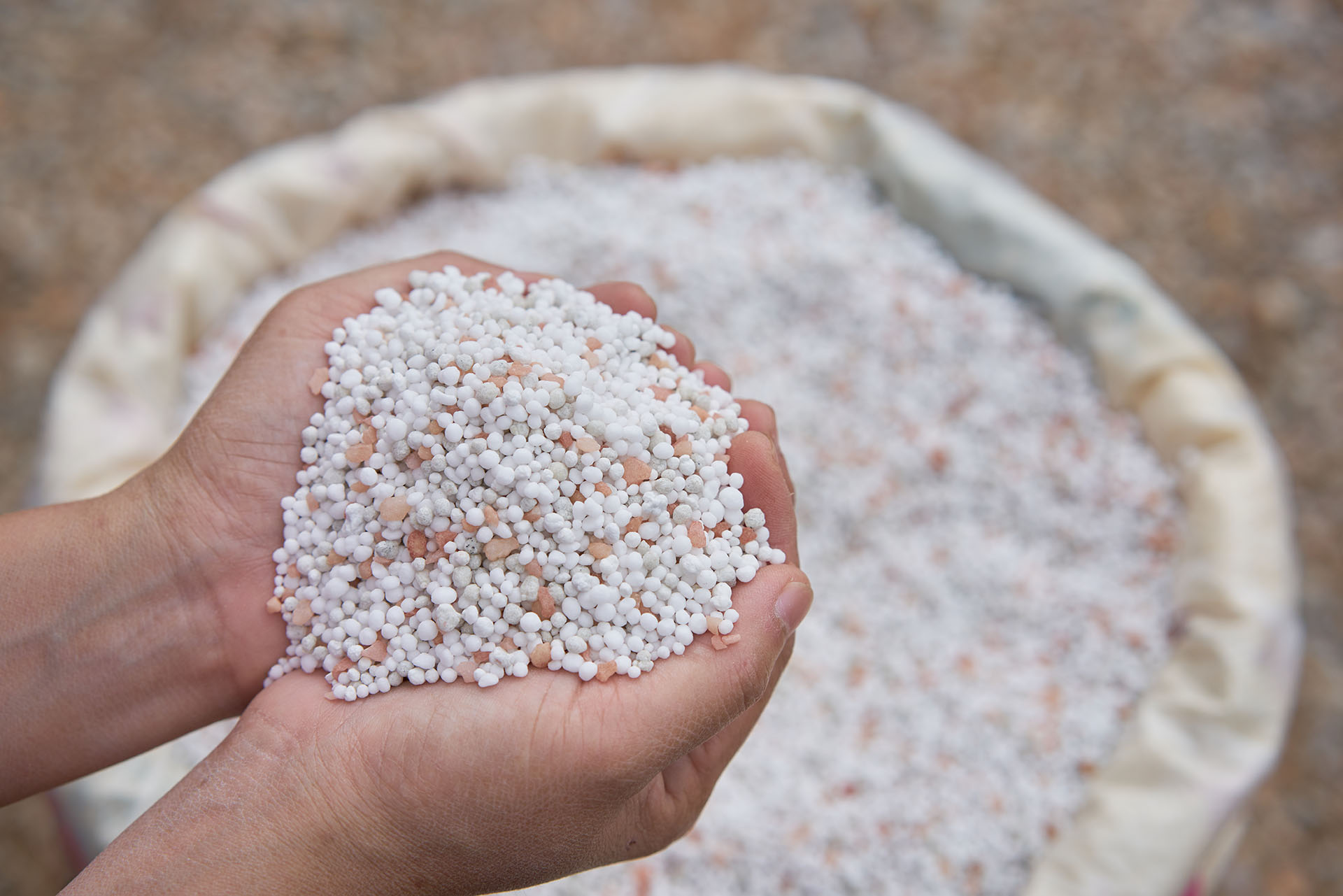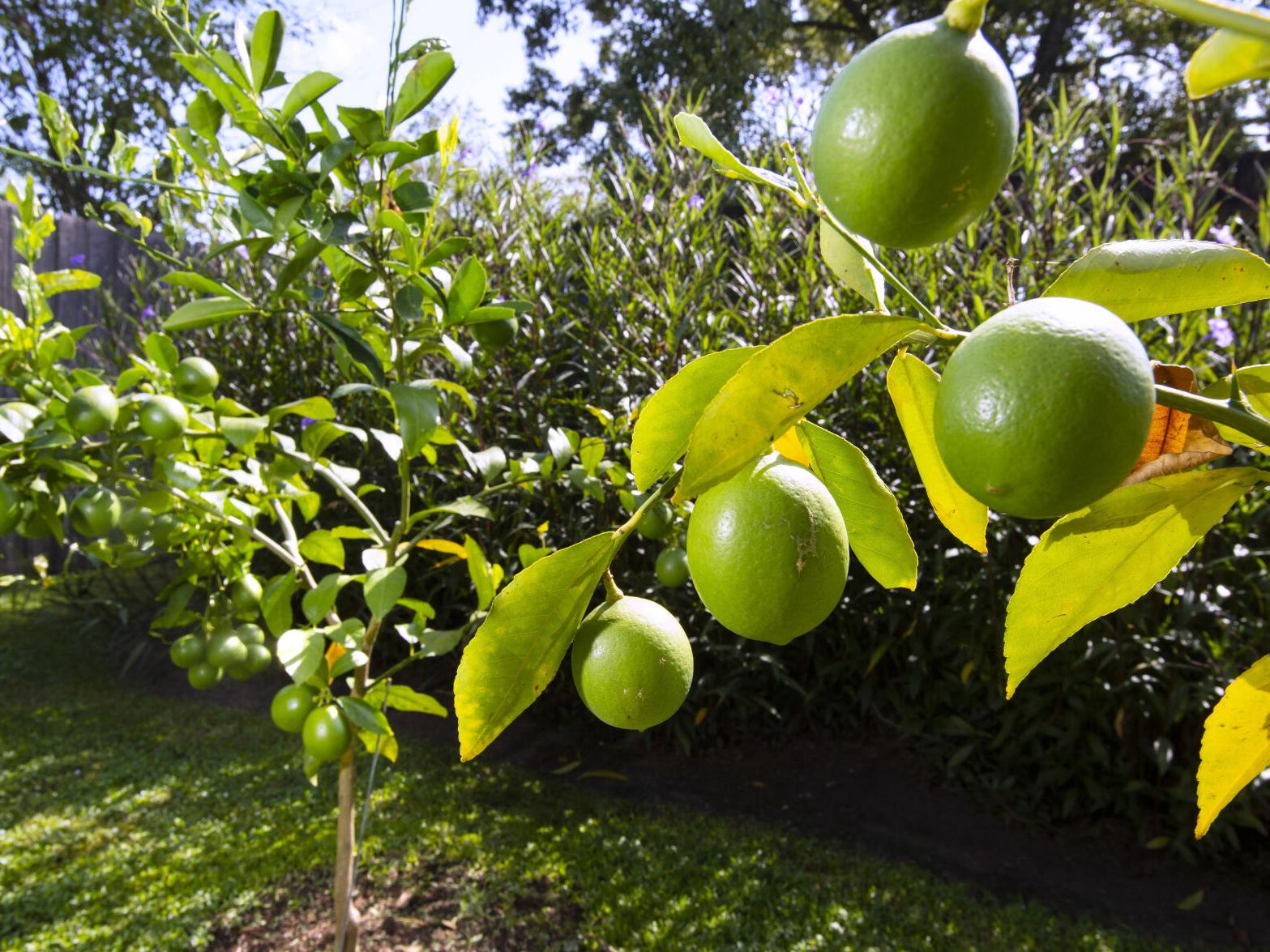Home>Gardening Basics>Understanding Soil>Why Add Lime To Soil


Understanding Soil
Why Add Lime To Soil
Modified: February 6, 2024
Learn the benefits of adding lime to soil and how it can improve soil pH and nutrient availability. Understand the importance of lime for healthy and productive soil.
(Many of the links in this article redirect to a specific reviewed product. Your purchase of these products through affiliate links helps to generate commission for Chicagolandgardening.com, at no extra cost. Learn more)
Table of Contents
Introduction
Understanding the importance of soil health is crucial for successful gardening, farming, and landscaping. One key factor that significantly impacts soil quality is its pH level. The pH level indicates whether the soil is acidic, neutral, or alkaline, and it directly influences the availability of essential nutrients to plants. When the soil becomes too acidic, it can hinder plant growth and reduce crop yields. To address this issue, many gardeners and farmers turn to lime as a solution to balance soil pH and create a more hospitable environment for plants.
In this article, we will explore the benefits of adding lime to soil, the various types of lime available, and the proper methods for application. By understanding the role of lime in soil management, you can make informed decisions to optimize the health and productivity of your garden or farm.
The addition of lime to soil is a practice deeply rooted in agricultural traditions, dating back centuries. Its efficacy in promoting healthy plant growth and enhancing soil structure has been well-documented, making it a valuable tool for modern agricultural practices as well. Whether you are a seasoned gardener or a novice enthusiast, grasping the significance of lime in soil management can empower you to cultivate thriving, bountiful gardens and farms. Let's delve into the world of lime and its profound impact on soil health and plant vitality.
What is Lime?
Lime, in the context of soil management, refers to a versatile agricultural amendment that is used to modify soil acidity levels. It is derived from limestone, a sedimentary rock composed primarily of calcium carbonate. Through a process called calcination, limestone is heated to high temperatures, resulting in the formation of quicklime (calcium oxide) or hydrated lime (calcium hydroxide). These lime products can then be finely ground into a powder for application to soil.
Calcium carbonate, the primary component of lime, plays a pivotal role in neutralizing soil acidity. When added to acidic soils, lime reacts with hydrogen ions, effectively raising the soil’s pH and making it less acidic. In addition to its pH-modifying properties, lime also serves as a source of essential calcium, an element vital for plant growth and development.
Beyond its role in pH adjustment, lime contributes to soil structure improvement by promoting flocculation, a process in which soil particles aggregate to form larger, more stable clumps. This enhances soil porosity, aeration, and water infiltration, fostering an environment conducive to root growth and nutrient uptake by plants.
It is important to note that while lime is a valuable tool for managing soil acidity, it should be used judiciously and in accordance with soil test recommendations. Overapplication of lime can lead to excessively high pH levels, potentially causing nutrient imbalances and negatively impacting plant health. By understanding the nature of lime and its effects on soil, you can make informed decisions regarding its application to achieve optimal growing conditions for your plants.
Benefits of Adding Lime to Soil
Adding lime to soil offers a myriad of benefits that contribute to improved soil quality and enhanced plant growth. One of the primary advantages of lime application is its ability to neutralize soil acidity. In acidic soils, essential nutrients such as nitrogen, phosphorus, and potassium become less available to plants, impeding their growth and productivity. By raising the soil pH through the addition of lime, these nutrients are released and made more accessible to plants, fostering healthier and more robust growth.
Furthermore, lime aids in the maintenance of proper soil pH levels, creating an environment where beneficial soil microorganisms thrive. These microorganisms play a crucial role in nutrient cycling and organic matter decomposition, bolstering soil fertility and overall ecosystem health. In turn, this promotes the development of a balanced and resilient soil ecosystem that supports vigorous plant growth and vitality.
Another notable benefit of adding lime to soil is its role in enhancing the efficacy of fertilizers. In acidic soils, fertilizers may be less effective due to nutrient imbalances and reduced nutrient availability. By rectifying soil acidity with lime, fertilizers can function optimally, ensuring that plants receive the necessary nutrients for their optimal development.
Moreover, the application of lime contributes to the improvement of soil structure, promoting better drainage, aeration, and root penetration. This is particularly beneficial in heavy clay soils, where the addition of lime can mitigate compaction and create a more favorable environment for root growth and water movement within the soil profile.
Overall, the benefits of adding lime to soil extend beyond pH modification, encompassing enhanced nutrient availability, improved soil microbial activity, and better soil structure. By leveraging the positive effects of lime, gardeners and farmers can cultivate thriving, productive landscapes and achieve greater success in their agricultural endeavors.
Types of Lime
There are several types of lime available for soil amendment, each with unique properties and applications. Understanding the distinctions between these lime variants is essential for selecting the most suitable option based on specific soil conditions and agricultural requirements.
1. Calcitic Lime: This type of lime, primarily composed of calcium carbonate, is a popular choice for raising soil pH and providing essential calcium to plants. Calcitic lime is ideal for soils with a magnesium deficiency, as it does not contain magnesium and therefore avoids the risk of exacerbating an existing imbalance.
2. Dolomitic Lime: Comprising both calcium carbonate and magnesium carbonate, dolomitic lime is a valuable option for addressing low soil pH while simultaneously remedying magnesium deficiencies. It is particularly beneficial for soils with low magnesium levels, offering a balanced approach to pH adjustment and nutrient supplementation.
3. Hydrated Lime: Also known as slaked lime, hydrated lime is produced by adding water to quicklime, resulting in a dry powder or slurry. It is a potent pH-raising agent, acting more quickly than traditional agricultural lime products. However, caution must be exercised when using hydrated lime, as its rapid reactivity can lead to overcorrection of soil pH if applied excessively.
4. Quicklime: This form of lime, also referred to as burnt lime or calcium oxide, is produced by heating limestone to high temperatures. Quicklime is highly effective in rapidly elevating soil pH, but its application requires careful handling due to its caustic nature. It should be applied with caution and thoroughly incorporated into the soil to prevent potential phytotoxicity.
When selecting the appropriate type of lime for soil amendment, it is crucial to consider the existing pH levels, nutrient deficiencies, and soil composition. Conducting a comprehensive soil test can provide valuable insights into the specific needs of the soil, guiding the selection of the most suitable lime product for achieving optimal soil conditions and promoting robust plant growth.
How to Apply Lime to Soil
Applying lime to soil is a strategic process that requires careful consideration of the soil’s current pH, the type of lime being used, and the specific needs of the plants being cultivated. The following guidelines outline the essential steps for effectively applying lime to soil:
1. Soil Testing: Before applying lime, conduct a thorough soil test to determine the existing pH levels and any nutrient deficiencies. This analysis will provide valuable insights into the type and quantity of lime required to optimize soil conditions for plant growth.
2. Selecting the Appropriate Lime: Based on the results of the soil test, choose the most suitable type of lime for addressing the specific pH and nutrient requirements of the soil. Consider factors such as the presence of magnesium deficiencies, the desired speed of pH adjustment, and the potential interactions with existing soil chemistry.
3. Calculating Application Rates: Determine the optimal application rate of lime based on the soil test recommendations and the type of lime being used. This calculation considers the desired change in soil pH, the buffering capacity of the soil, and the effective neutralizing value (ENV) of the chosen lime product.
4. Uniform Application: Apply the calculated amount of lime evenly across the soil surface, utilizing appropriate equipment such as spreaders for large-scale applications. Ensure thorough coverage to facilitate consistent pH modification and nutrient distribution throughout the soil profile.
5. Incorporation into the Soil: After application, incorporate the lime into the soil through mechanical means such as tilling, plowing, or harrowing. This step promotes the intimate mixing of lime with the soil, enhancing its reactivity and ensuring uniform distribution for effective pH adjustment.
6. Timing of Application: Ideally, apply lime to the soil several months before planting or sowing to allow sufficient time for it to react and alter the soil pH. Early application enables the lime to exert its effects and create an optimal growing environment for the upcoming planting season.
7. Monitoring and Adjusting: Regularly monitor the soil pH and nutrient levels to gauge the effectiveness of the lime application. If necessary, make adjustments in subsequent applications based on evolving soil conditions and the specific requirements of the cultivated plants.
By following these steps and customizing the lime application process to suit the unique characteristics of the soil and crops, gardeners and farmers can harness the benefits of lime while promoting a fertile, balanced soil environment conducive to thriving plant growth.
Precautions and Considerations
While the application of lime offers significant benefits for soil management, it is important to exercise caution and consider several key factors to ensure its effective and responsible use.
1. Proper Protective Gear: When handling lime products, particularly quicklime and hydrated lime, it is essential to wear appropriate personal protective equipment, including gloves, eye protection, and a dust mask. These precautions safeguard against potential skin and respiratory irritation due to lime dust or contact with caustic lime materials.
2. Application Timing: Avoid applying lime in conjunction with fertilizers or organic materials that may undergo decomposition, as this can lead to nitrogen loss through ammonia volatilization. Additionally, consider the timing of lime application in relation to planting schedules, allowing sufficient time for the soil to undergo pH adjustments before introducing sensitive plants.
3. Calcium and Magnesium Balance: When selecting lime products, take into account the existing calcium and magnesium levels in the soil. Dolomitic lime is a suitable choice for addressing both pH and magnesium deficiencies, while calcitic lime is preferable in situations where magnesium levels are adequate or high.
4. Environmental Impact: Be mindful of the potential environmental impact of lime application, particularly in areas with sensitive ecosystems or water sources. Avoid excessive runoff of lime into water bodies, as this can lead to alkaline conditions that are detrimental to aquatic life and ecological balance.
5. Soil Testing Frequency: Regular soil testing is crucial to monitor the long-term effects of lime application and to assess any shifts in soil pH and nutrient availability. Periodic testing guides the adjustment of lime application rates and intervals, ensuring sustained soil health and optimal plant nutrition.
6. Storage and Handling: Store lime products in a dry, well-ventilated area to prevent moisture absorption and maintain their effectiveness. Proper storage and handling practices prolong the shelf life of lime and preserve its reactivity for soil amendment purposes.
7. Consultation with Experts: In cases of uncertainty regarding lime application or soil management, seek guidance from agricultural extension services, soil scientists, or experienced agronomists. Their expertise can provide valuable insights and recommendations tailored to specific soil and crop requirements.
By observing these precautions and considerations, individuals can maximize the benefits of lime application while minimizing potential risks and environmental impacts. Thoughtful and informed use of lime contributes to the cultivation of healthy, productive soils that support thriving plant communities and sustainable agricultural practices.
Conclusion
As a fundamental component of soil management, the addition of lime plays a pivotal role in fostering optimal growing conditions for plants and promoting the overall health and productivity of agricultural landscapes. By addressing soil acidity, enhancing nutrient availability, and improving soil structure, lime application offers a multitude of benefits that directly impact plant growth and ecosystem vitality.
Through the strategic selection and application of various lime products, gardeners and farmers can tailor their soil management practices to address specific pH and nutrient requirements, thereby creating an environment conducive to thriving plant growth. The careful consideration of precautions and environmental implications ensures that lime application is carried out responsibly, minimizing potential risks and maximizing its positive impacts on soil health.
By leveraging the insights and guidelines presented in this article, individuals can harness the transformative potential of lime in soil management, paving the way for bountiful harvests, vibrant gardens, and sustainable agricultural practices. The thoughtful integration of lime into soil management strategies empowers agricultural practitioners to cultivate resilient, nutrient-rich soils that support the flourishing of diverse plant communities, ultimately contributing to the advancement of sustainable and productive agricultural landscapes.
As you embark on your soil management journey, may the knowledge and considerations shared here guide you in harnessing the remarkable benefits of lime, nurturing fertile soils, and reaping the rewards of vibrant, thriving plant life.



